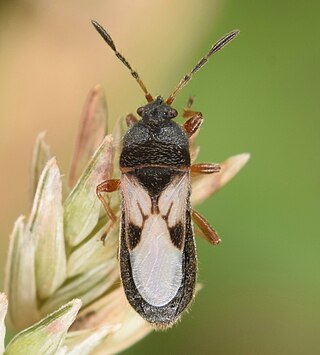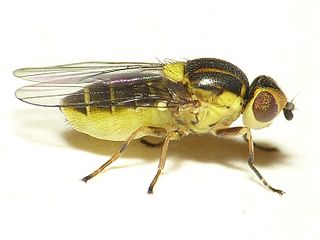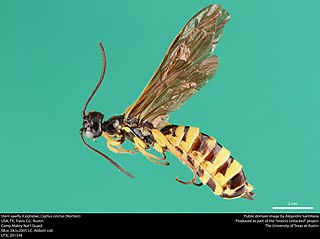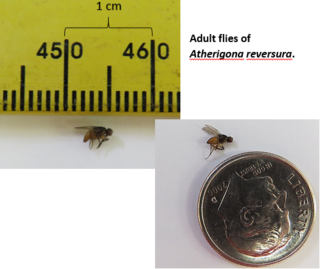
Wheat is a grass widely cultivated for its seed, a cereal grain that is a worldwide staple food. The many species of wheat together make up the genus Triticum ; the most widely grown is common wheat. The archaeological record suggests that wheat was first cultivated in the regions of the Fertile Crescent around 9600 BC. Botanically, the wheat kernel is a caryopsis, a type of fruit.

Panicum miliaceum is a grain crop with many common names, including proso millet, broomcorn millet, common millet, hog millet, Kashfi millet, red millet, and white millet. Archaeobotanical evidence suggests millet was first domesticated about 10,000 BP in Northern China. Major cultivated areas include Northern China, Himachal Pradesh of India, Nepal, Russia, Ukraine, Belarus, the Middle East, Turkey, Romania, and the Great Plains states of the United States. About 500,000 acres are grown each year. The crop is notable both for its extremely short lifecycle, with some varieties producing grain only 60 days after planting, and its low water requirements, producing grain more efficiently per unit of moisture than any other grain species tested. The name "proso millet" comes from the pan-Slavic general and generic name for millet.

Rye is a grass grown extensively as a grain, a cover crop and a forage crop. It is a member of the wheat tribe (Triticeae) and is closely related to both wheat and barley. Rye grain is used for flour, bread, beer, crispbread, some whiskeys, some vodkas, and animal fodder. It can also be eaten whole, either as boiled rye berries or by being rolled, similar to rolled oats.

The Tephritidae are one of two fly families referred to as fruit flies, the other family being the Drosophilidae. The family Tephritidae does not include the biological model organisms of the genus Drosophila, which is often called the "common fruit fly". Nearly 5,000 described species of tephritid fruit fly are categorized in almost 500 genera of the Tephritidae. Description, recategorization, and genetic analyses are constantly changing the taxonomy of this family. To distinguish them from the Drosophilidae, the Tephritidae are sometimes called peacock flies, in reference to their elaborate and colorful markings. The name comes from the Greek τεφρος, tephros, meaning "ash grey". They are found in all the biogeographic realms.

The Hessian fly or barley midge, Mayetiola destructor, is a species of fly that is a significant pest of cereal crops including wheat, barley and rye. Though a native of Asia, upon its discovery it was believed to have been transported into North America in the straw bedding of Hessian troops during the American Revolution (1775–1783), thus the origin of its common name. However, the report of an inquiry made in 1788 by Sir Joseph Banks states that "no such insect could be found to exist in Germany or any other part of Europe". Nonetheless, it appears that this species, or one exactly like it in habits, had been known for at least a century prior to the American revolution from a locality near Geneva, and also for a long time from some regions in France.

The Anthomyiidae are a large and diverse family of Muscoidea flies. Most look rather like small houseflies. Most species are drab grey to black. Many Pegomya are yellow, and some members of the genera Anthomyia and Eutrichota are patterned in black-and-white or black-and-silvery-grey. Most are difficult to identify, apart from a few groups such as the kelp flies that are conspicuous on beaches.

Blissus leucopterus, also known as the true chinch bug, is a small North American insect in the order Hemiptera and family Blissidae. It is the most commonly encountered species of the genus Blissus, which are all known as chinch bugs. A closely related species is B. insularis, the southern chinch bug.

Nomophila noctuella, the rush veneer, is a species of moth of the family Crambidae.
Mayetiola hordei,, the barley stem gall midge, is a cereal pest in Tunisia, closely related to the Hessian fly.

Rhyzopertha is a monotypic genus of beetles in the family Bostrichidae, the false powderpost beetles. The sole species, Rhyzopertha dominica, is known commonly as the lesser grain borer, American wheat weevil, Australian wheat weevil, and stored grain borer. It is a beetle commonly found within store bought products and pest of stored cereal grains located worldwide. It is also a major pest of peanuts. The first documentation of wheat infestation by R. dominica was observed in Australia. R. dominica are usually reddish brown to dark brown in coloration, vary in sizes, elongated and cylindrical.

Chlorops pumilionis is a species of pest fly from the family Chloropidae. It is also known as the chloropid gout fly or barley gout fly. It is an oligophagous pest of cereal crops.

Contariniatritici is a small dipterous insect of the family of gall gnats. It depredates wheat, to which it is nearly as destructive as the famous and closely allied species, the Hessian fly. As is typical for agricultural pests, the species is known by a number of common names, including wheat fly, lemon wheat blossom midge, wheat blossom midge, wheat yellow blossom midge, yellow wheat blossom midge, and yellow wheat gall midge.

Oscinella frit is a European species of fly and member of the family Chloropidae. Oscinella frit is an agricultural pest causing damage to crops by boring into the shoots of oats, wheat, maize, barley and grasses.

Cephus cinctus, also known as wheat stem sawfly, is a slow flying, yellow and black coloured, destructive pest found mainly in western North America.

Sitodiplosis mosellana, the wheat midge or orange wheat blossom midge, is a species of fly in the family Cecidomyiidae. It is found in the Holarctic, where it is a significant pest of wheat, triticale and rye.

Atherigona is a genus of flies in the family Muscidae.
Atherigona oryzae, the rice shoot fly, is a species of fly in the family Muscidae. It is found in Asia and Australia. It is known to affect rice, kodo millet, wheat, and corn crops.
Atherigona punctata, the Coimbatore wheat stem fly, is a species of fly in the family Muscidae. In South India, it is a pest of the wheat plant, Triticum aestivum.
Meromyza americana is a fly species in the family Chloropidae. It is a pest of millets.














